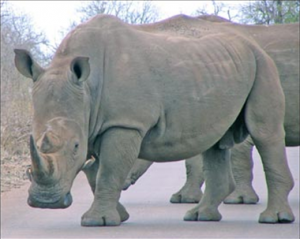News
Latest Lion Aid News
Wildlife conservation and wildlife ranching
Wednesday 9th February 2011
|
There seems to be a developing trend in these days of supply and demand to satisfy the “demand” for wildlife products by supplying them from a “ranched” situation. By that I mean species raised on what are essentially farms under controlled conditions to be able to be sold more cost-effectively onto the market. But for some species, ranching has been spun into the realm of conservation. Seductive as it might be to some, this has to be nipped in the bud.
There is nothing new about the concept of ranching really, we have been doing it for many thousands of years. What we think of as domestic animals like cows and pigs and sheep and goats and minks and rabbits and chickens and turkeys … you get the point….were all wild in the past and we developed the means of harvesting more efficiently by farming rather than having to run around hunting them. The farming trend has continued to lots of other species these days, just think of salmon and prawns and pheasants and quail and bison and reindeer and red deer.
Wildlife ranching is pervasive.
In the USA and South Africa and Kenya and Botswana and Zimbabwe and Zambia at least there is an established and/or growing trend to establish game ranches catering to the supply of wildlife for ungulate (and ostrich) trophy hunting and/or meat. In fact, game ranching (of herbivores) is seen as environmentally friendly since wildlife is not as destructive of vegetation as cows or goats. In addition, benefits accrue to the ranchers as the product can be sold for higher prices than domestic stock (a cow has yet to be displayed in any trophy room as far as I know), and needs less veterinary care as wildlife mostly shrugs off diseases like bluetongue, African horse sickness, theileriosis, trypanosomiasis, and foot-and mouth. Free-range and no hormones in the meat are an added incentive to the consumer.
But is wildlife ranching conservation?
So far so good. But there is an ugly side of wildlife ranching that has been raising its head. Some examples:
Ranching is commercial utilisation
So what do we think about the farming of wildlife? We seem supportive of being able to buy salmon and prawns and deer at better prices than if they were harvested from the wild. Game ranchers are happy to provide wildlife products at reduced costs to clients wanting trophies and meat.
But please, let’s call it what it is – utilization. And let’s please not get this all confused with conservation. Just because there are many more white rhinos now than before, and something like 20% of remaining lions in Africa are involved in captive breeding programmes to supply the hunting trade, this does not mean we are conserving those species. The demand for their wild relatives remains high and unabated. In fact, traditional medicine values a wild animal much higher than a ranched one, just like we pay a premium for a wild salmon rather than a farmed fish. Conservation should have loftier goals than breeding more animals of a species in any artificial situation. Conservation is about doing the best we can to ensure wild animals continue to live in the environment in which they belong. There is no commercial substitute.
Picture credit: http://www.african-safari-pictures.com/white-rhino-pictures.html
Categories: Economics of Wildlife |
Posted by Pieter Kat at 12:10
No comments have been posted yet.
Add a new comment
Existing user
New user sign up




